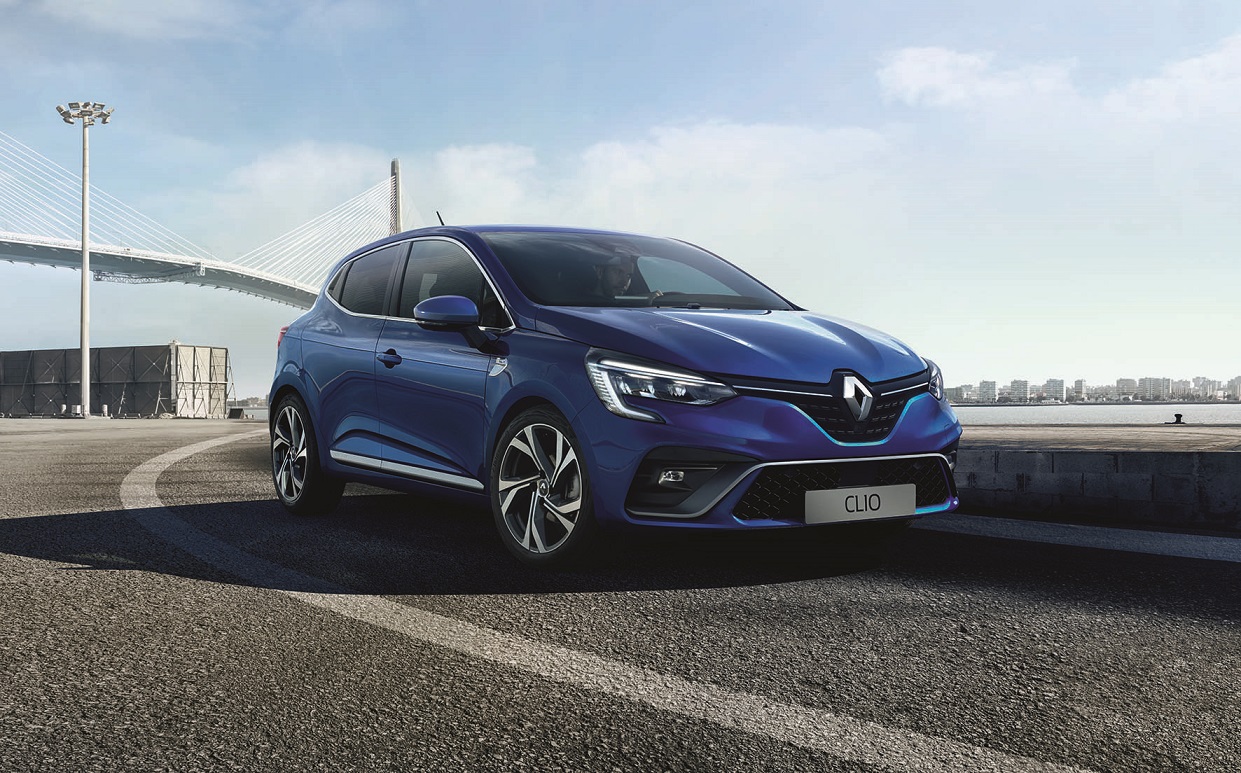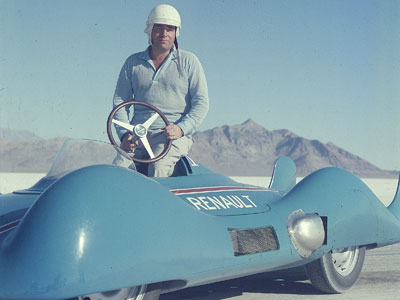

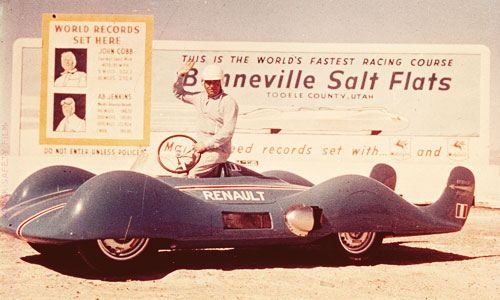
L'Etoile Filante, a record machine
The achievement of the Renault Étoile Filante has yet to be bested, with a peak of 306.9 km/h over a kilometer and 308.85 km/h over 5 kilometers. Yet the sleek blue racer, measuring over five meters long, is celebrating its 60th birthday this year!
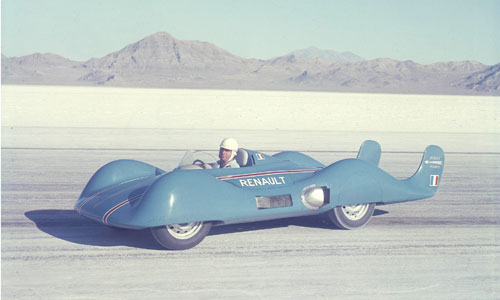
The aeronautic sector expanded rapidly after the Second World War. Joseph Szydlowski, head of Turboméca, the renowned turbine engine manufacturer, started the small-scale production of powerful turbine engines, fitted notably on the famous Alouette helicopters. He soon joined forces with La Régie Renault, which was looking for new techniques for its engines. Renault chief Pierre Lefaucheux had also set his sights on beating the world land speed record.
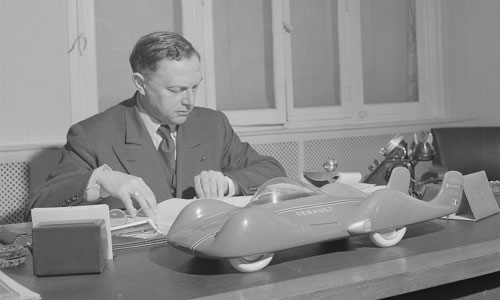
Fernand Picard in his office.
The project got off the ground in 1954, led by three experienced professionals: Fernand Picard, head of research; Albert Lory, the illustrious engine developer; and Jean Hébert, engineer and driver. The trio designed an outstanding vehicle powered by an ultra-powerful turbine engine developing 270 hp at 28,000 rpm. The Étoile Filante featured a tubular, polyester-clad body and two large aircraft-like fins. It was equipped with the Transfluide transmission that would later be used on the Frégates. In a nod to the aeronautics sector, it ran on kerosene and was practically vibration-free thanks to the rotation speed of the turbines.
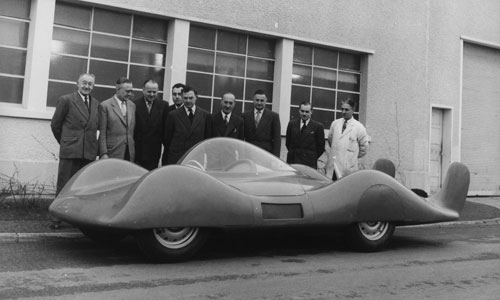
Picard, Lory & Hébert with Renaul's Etoile Filante in Rueil in 1956
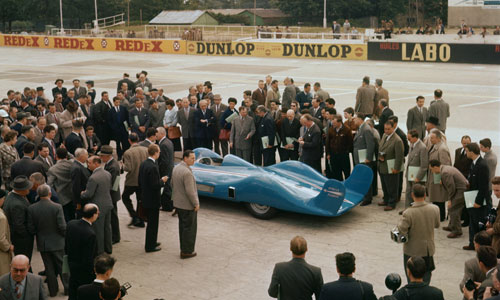
Introducing the car to the media in 1956 at Monthléry
The Etoile Filante was presented to the press and specialists on June 22, 1956 at the Montlhéry circuit. Just 2 units of the vehicle were ever produced!
Out to conquer the USA
The record set by the Étoile Filante in Bonneville in 1956 was covered in the press around the world, and in particular by US journalists. The feat helped to boost Renault’s reputation in the USA, and would indirectly favor the Dauphine, launched for export at the same time.
Unfortunately, the Etoile Filante – French for “shooting star” – lived up to its name and burnt out after setting its record. The turbine engine was mainly used in aviation and proved difficult to adapt to cars, especially in terms of eliminating the heat produced by the powerplant and adapting the very high rotation speeds of the turbines to road travel.
Besides its media impact and avant-garde design, the Étoile Filante project was interesting from a technical standpoint. It was an opportunity to study the road behavior of an extremely refined vehicle travelling at extremely high speeds, as well as the effect of fins and the braking system of a very fast vehicle with no engine brake. The Étoile Filante was France’s riposte to the work undertaken at the time by Fiat and General Motors.
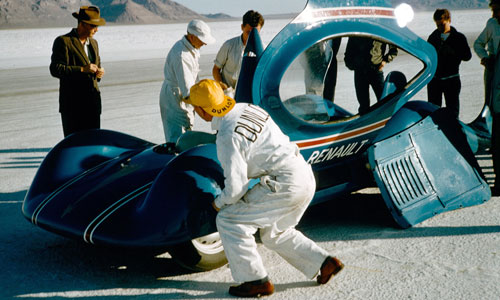
Etoile Filante Renault in Bonneville, USA - 1956
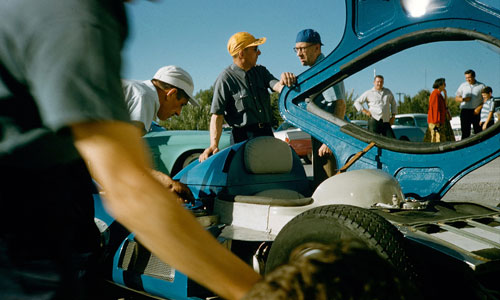
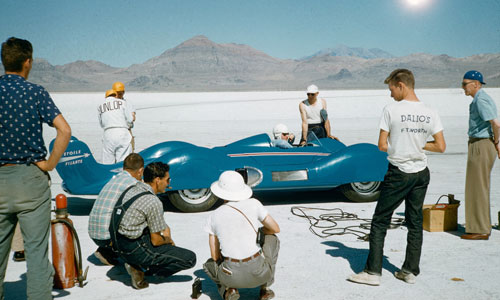
Etoile Filante Renault in Bonneville, USA - 1956
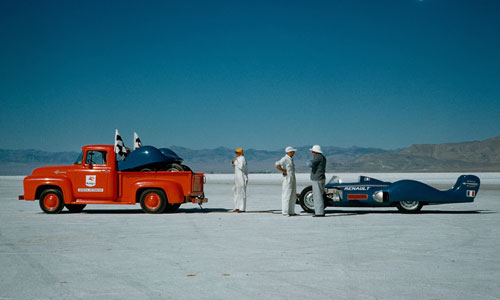
Etoile Filante Renault in Bonneville, USA - 1956
Technical characteristics
Engine
Turbomeca “Turmo” turbine
Maximum power: 270 hp at 28,000 rpm
Fuel: kerosene
Transmission
“Transfluide”
Reduction gear from 28,000 rpm to 2,500 rpm.
Brakes
Interior discs
Body
Renault, chassis-frame in chrome-molybdenum steel tubing.
Dimensions
Length: 4,840 mm
Width: 1,820 mm
Height: 1,100 mm
Weight: 950 kg
Performance
Top speed: 308.9 km/h, record set on September 5, 1956 by Jean Hébert on the Bonneville Salt Flats in the USA.
Sources: http://fr.renaultclassic.com, http://www.autobrico.com et http://www.renault.com
View more

SAFETY: 5 EURO NCAP STARS AND BEST RATING IN ITS CATEGORY FOR THE ALL-NEW CLIO
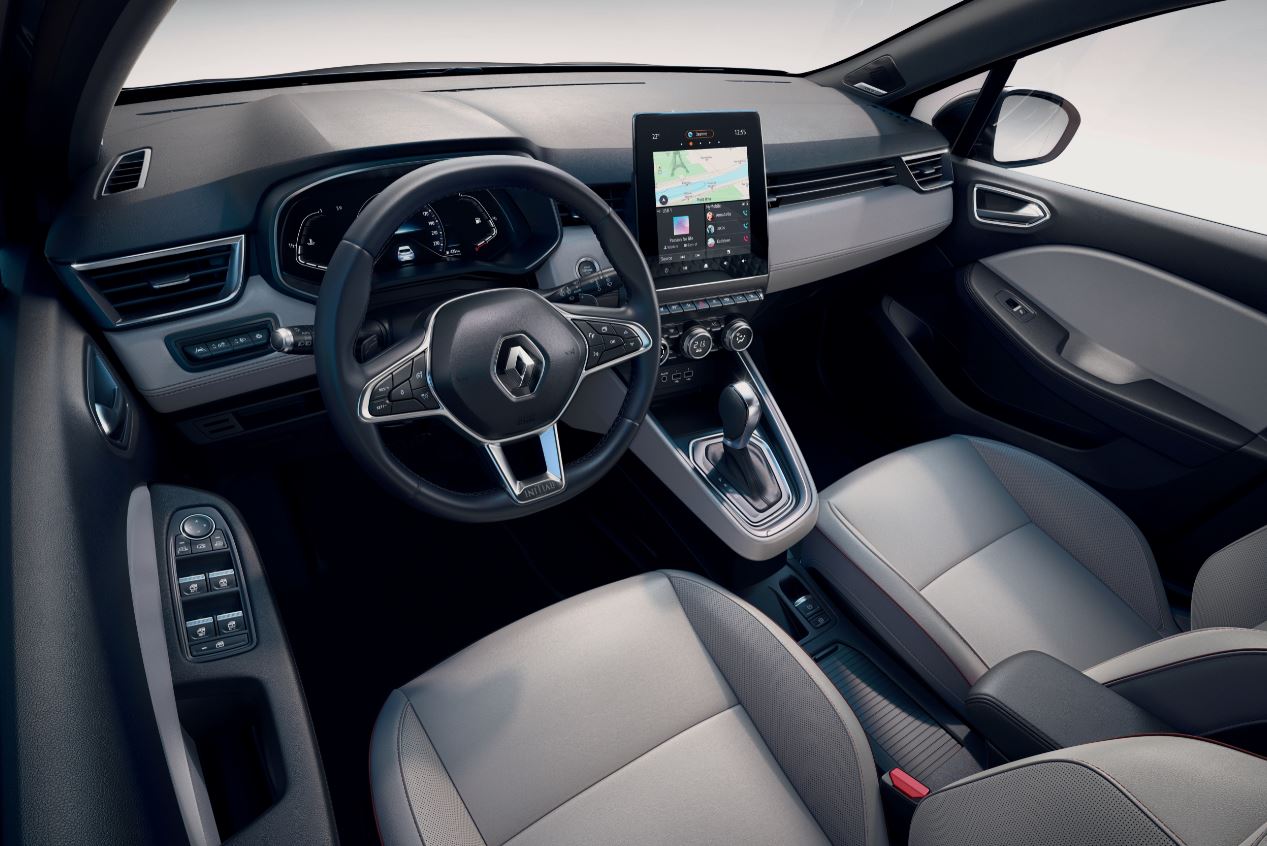
The All-new Renault CLIO: the most comprehensive driving assistance on the market
